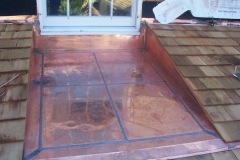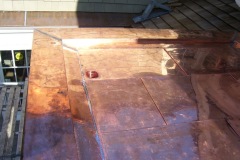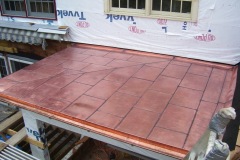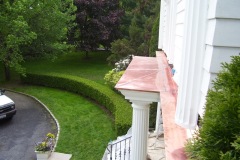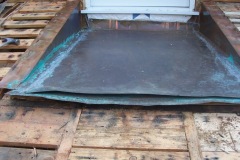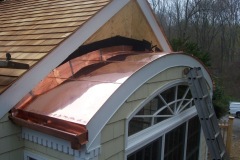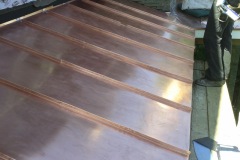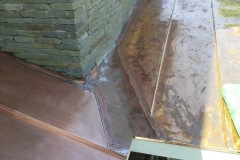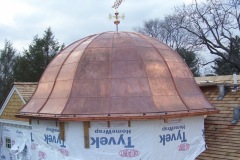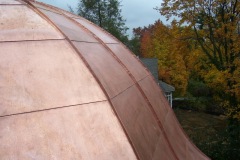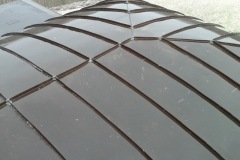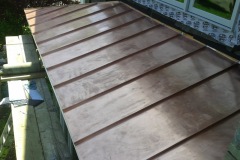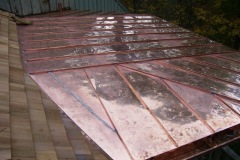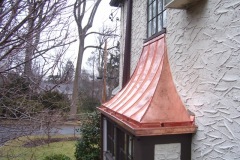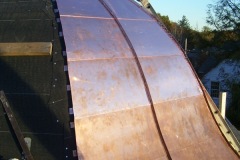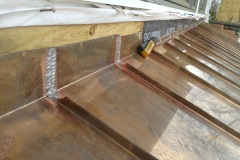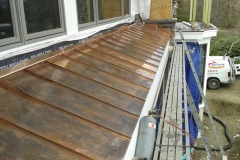- Copper roofing is extremely resistant to corrosion and extreme weather conditions, as a result it will not deteriorate and it requires very little maintenance.
- Copper is a flexible metal that is produced in either seams or sheet form.
- It can be shaped and bent to suit almost any roofing style, allowing for the additions of various accessories due to its lightweight.
- Bent copper forms wind resistant and water tight seals, making copper flashings most effective.
- Copper roofs change in hue with time and weather exposure. It slowly develops a unique patina ranging from salmon pink to russet brown, or even a charcoal grey. This process can take anywhere from 5 to 14 years, depending on your surroundings. However this does not affect its functionality, and is regarded as a classical and elegant look.
- Selecting copper as your roofing material can help the homeowner achieve a timeless look or suit an existing architectural style.
- The combined longevity and financial savings is a reason why so many home owners decide to go with a copper roof.
Flat Seam
- Flat seam metal roofing refers to the joining of metal panels that are folded one over the other progressively, and hammered down to form a flat seam. The seams are fully soldered to provide a weather tight joint.
- Concealed expansion clip fasteners are used on the panels, to allow them to move during thermal contraction and expansion, and thus eliminate the need for screw penetrations which are a common source for leaks.
- Although this type of seam is most commonly used on a low slope and flat roof surfaces, the flat seam metal roofing can also be used on curvedlike curves and vaults.
- The most common material used for flat seams is copper.
- This type of metal roofing has a low life cycle cost and will typically last up to 20 years with no maintenance at all.
- Flat seam metal roofs are made usually from recycled metal components, and are environmentally friendly due to their energy efficiency.
Standing Seam
- The standing seam metal roof is made up of many interlocking metal panels that are placed vertically from the ridge of the roof downwards.
- The most commonly used metal for standing seam systems is galvanized steel, copper, aluminum, and zinc.
- Standing seam roofing is applied using specially concealed clips, which retain the position of the panels and allow them to expand and contract during temperature change, and resist strong winds.
- Standing seam systems provide the ultimate in durable roofing, as they are puncture resistant and can withstand even the most extreme forces of nature, including hurricanes and hail storms. This is due the raised weather tight seam above the roof’s drainage area and the organic sealants that are applied.
- A standing seam metal roof can also be installed directly onto an existing roof, which saves time and money during construction.
- Standing seam also offers excellent drainage solutions for snow and rain, and eliminates the problems of pooling water.
- Standing seam has a special insulation installed between the metal panels and under layer to create an independent insulation system.
- Maintenance required is minimal to none, as it is resistant to cracking, shrinking, eroding, perforating, puncturing, rusting, and corroding.
Overall, standing seam is an excellent and lasting investment.

